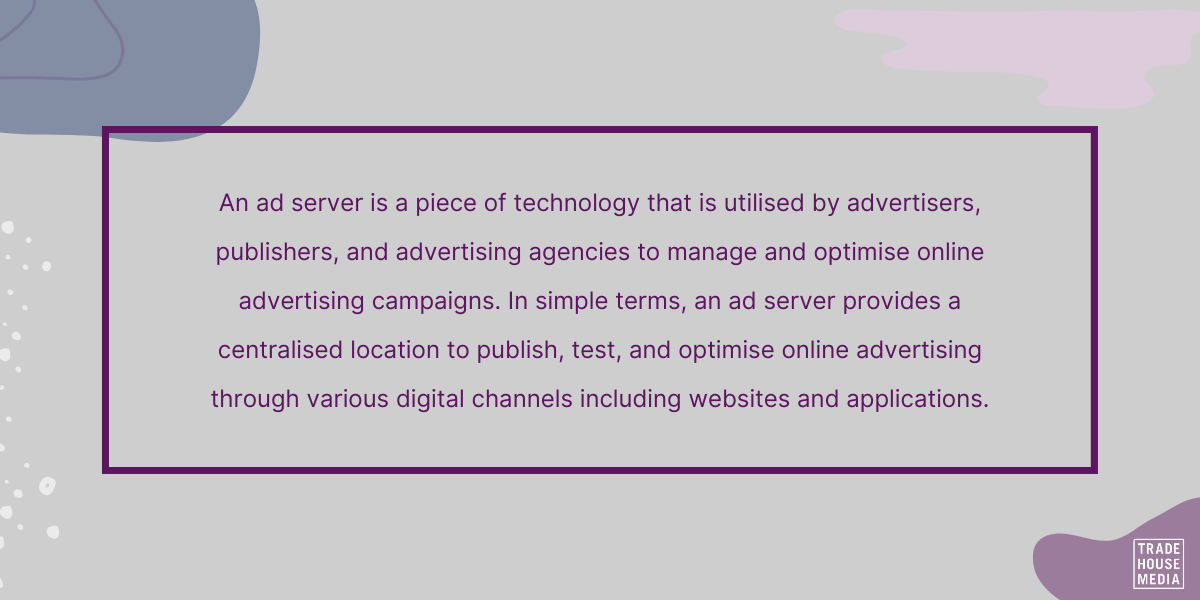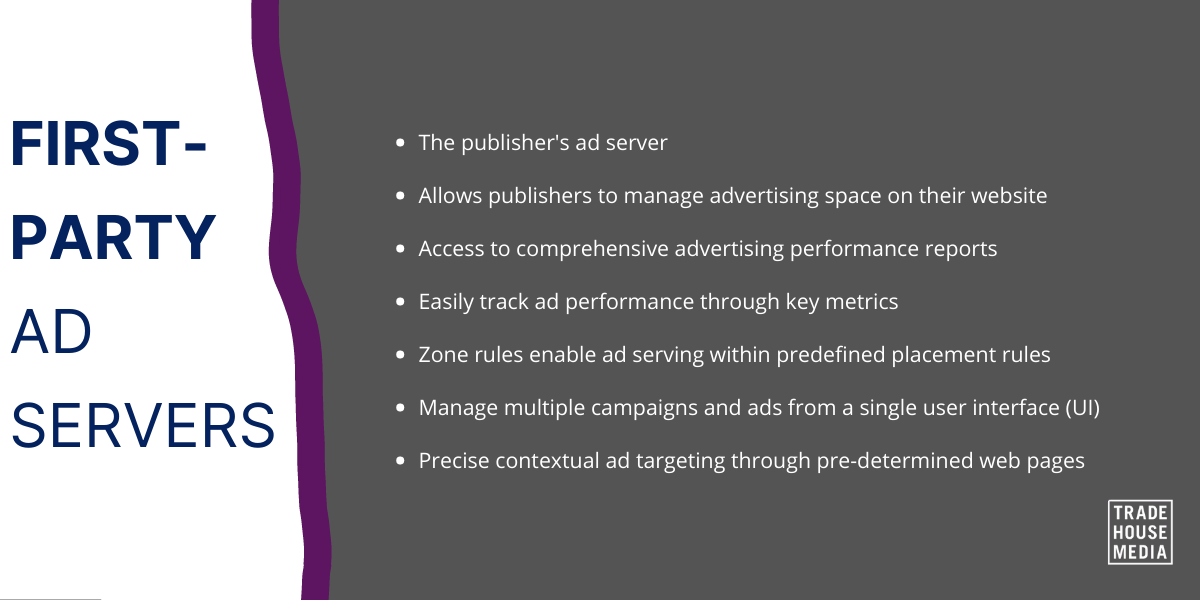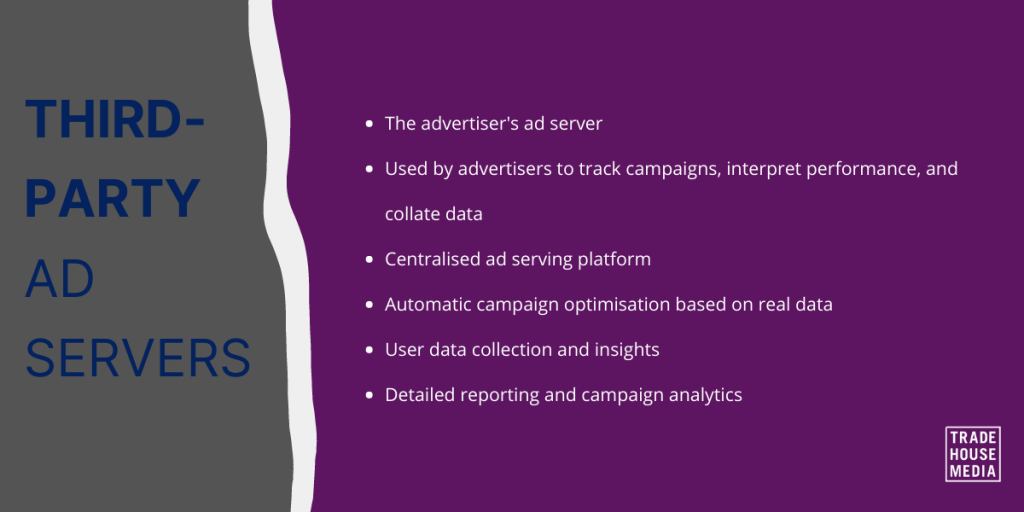
5 min read
What is an Ad Server?
What Is an Ad Server? Ad Server technology plays an essential role in the digital advertising ecosystem for advertisers and publishers alike.
Ad server technology plays an essential role in the digital advertising ecosystem for advertisers and publishers alike.
Nowadays, tech-led digital advertising rhetoric centres around AdTech platforms such as supply-side platforms (SSPs), demand-side platforms (DSPs), and ad exchange networks. However, before this technology existed, there was a pioneer that shaped the way that publishers and advertisers delivered advertisements across various online networks – ad servers. To understand and appreciate the technology that continues to push the industry forward, we must look back at the breakthrough tech that shaped it to this point. Ad servers continue to play an important role in the online advertising ecosystem – a point that we will examine throughout this article.



Ad serving technology plays a crucial role in the online, programmatic advertising process. For media owners, ad servers continue to play an integral role in maximising inventory efficiency and sell-through. Trade House Media is the United Kingdom’s leading ad tech company with senior expertise across the technology, publisher, and agency side of the advertising process. Get in touch today to find out how we utilise Ad Servers to increase efficiency and win more business for our clients.
Nowadays, tech-led digital advertising rhetoric centres around AdTech platforms such as supply-side platforms (SSPs), demand-side platforms (DSPs), and ad exchange networks. However, before this technology existed, there was a pioneer that shaped the way that publishers and advertisers delivered advertisements across various online networks – ad servers. To understand and appreciate the technology that continues to push the industry forward, we must look back at the breakthrough tech that shaped it to this point. Ad servers continue to play an important role in the online advertising ecosystem – a point that we will examine throughout this article.
What Is an Ad Server?
An ad server is a piece of technology that is utilised by advertisers, publishers, and advertising agencies to manage and optimise online advertising campaigns. Modern ad servers have evolved markedly over the last two decades and can now be used as a one-stop ad management interface that supports creative endeavours, as well as reach optimisation through advanced delivery parameters and algorithms. In simple terms, an ad server provides a centralised location to publish, test, and optimise online advertising through various digital channels including websites and applications. Ad servers allow advertisers and publishers to manage the end-to-end scope of online advertising in a single portal from planning, to targeting, optimisation and reporting.
How Does an Ad Server Work?
Understanding the functionality of an ad server provides greater context into the process and how advertisers and publishers interact to deliver better, more relevant ads to website visitors or App users. The process is nuanced, however, the basic elements that allow an ad server to operate include:- A user visits a website
- When a user lands on a website, a request is set to the publisher’s ad server
- Once the request is received, the ad server reviews user data and delivers an ad which is calculated to be most relevant to that user. Some of the metrics that are considered include location, browsing history, engagement history, user age, and so on.
- A suitable ad is located within the server based on the aforementioned factors
- The ad is then served to the user while they are on the web page
- The advertiser can then access user insights such as ad interaction with the media to determine whether this was a suitable placement and inform future advertising campaigns.
What Are the Different Types of Ad Servers?
There are two types of ad servers which utilise similar technology but are used by publishers and advertisers for disparate purposes. First-party ad servers can be used by publishers, while advertisers will utilise third-party ad servers.First Party Ad Servers
First-party ad servers are sometimes referred to as the ‘publisher's ad server’ because they allow publishers to manage advertising space on their website and display ads that are sold to advertisers through direct campaigns. First-party ad servers are responsible for serving ads based on predetermined parameters such as impressions, click-through rate (CTR), audience profile, and other data points. In addition to allowing publishers to effectively manage ad space and serve targeted ads, they also enable inventory forecasting through advanced algorithms which account for available inventory space, inventory type, and the sell-through rate based on current campaign and traffic expectations. First-party servers cut down on human error and advertising missteps caused by incomplete data.Why publishers use first-party ad servers

- Access to comprehensive advertising performance reports detailing ad placement, forecasting, and optimisation insights.
- Easily track ad performance through key metrics such as clicks, impressions, and click-through-rate (CTR)
- Zone rules enable ad serving within predefined placement rules
- Manage multiple campaigns and ads from a single user interface (UI)
- Precise contextual ad targeting through pre-determined web pages
Third-Party Ad Servers
Third-party ad servers or advertiser’s ad servers are used by advertisers to track campaigns, interpret ad performance, collate data, and quantify key campaign performance metrics such as impressions, clicks, and CTR. The third-party ad server is used to host and deliver ads to websites and mobile applications while also enabling ad optimisation, campaign management, and detailed performance reports. For advertisers, third-party ad servers also provide attractive features such as the ability to change campaign creative on the fly and run A/B testing to determine ad type efficacy by user behaviour and key metrics.Why advertisers use third-party ad servers
- Centralised ad serving platform
- Automatic campaign optimisation based on real data
- User data collection and insights
- Detailed reporting and campaign analytics

The History of Ad Servers
In the early 1990s, prior to Ad Servers, the process of buying and selling ads took place directly and manually. It didn’t take long for advertisers and publishers to recognise that they needed a more efficient way to exchange inventory and manage campaigns. Enter, innovative Ad serving technology. The first ad server was founded by Dave Zinman, Andrew Conru, and Jason Strober of FocaLink Media Services in July 1995. In 1996, a company called DoubleClick identified bottlenecks within the ad delivery network and implemented advertising networks to facilitate the successful exchange of ad inventory. In the beginning, the functionality of ad servers was limited by the predictive parameters that were used to serve advertisements. The original ad servers were tasked with serving ads based on basic information including:- The operating system of the user
- The browser type and version being used
- The language that was set by the user – not the location
- The destination URL being visited by the user
Wrapping Up
Ad serving technology plays a crucial role in the online, programmatic advertising process. For media owners, ad servers continue to play an integral role in maximising inventory efficiency and sell-through. Trade House Media is the United Kingdom’s leading ad tech company with senior expertise across the technology, publisher, and agency side of the advertising process. Get in touch today to find out how we utilise Ad Servers to increase efficiency and win more business for our clients.